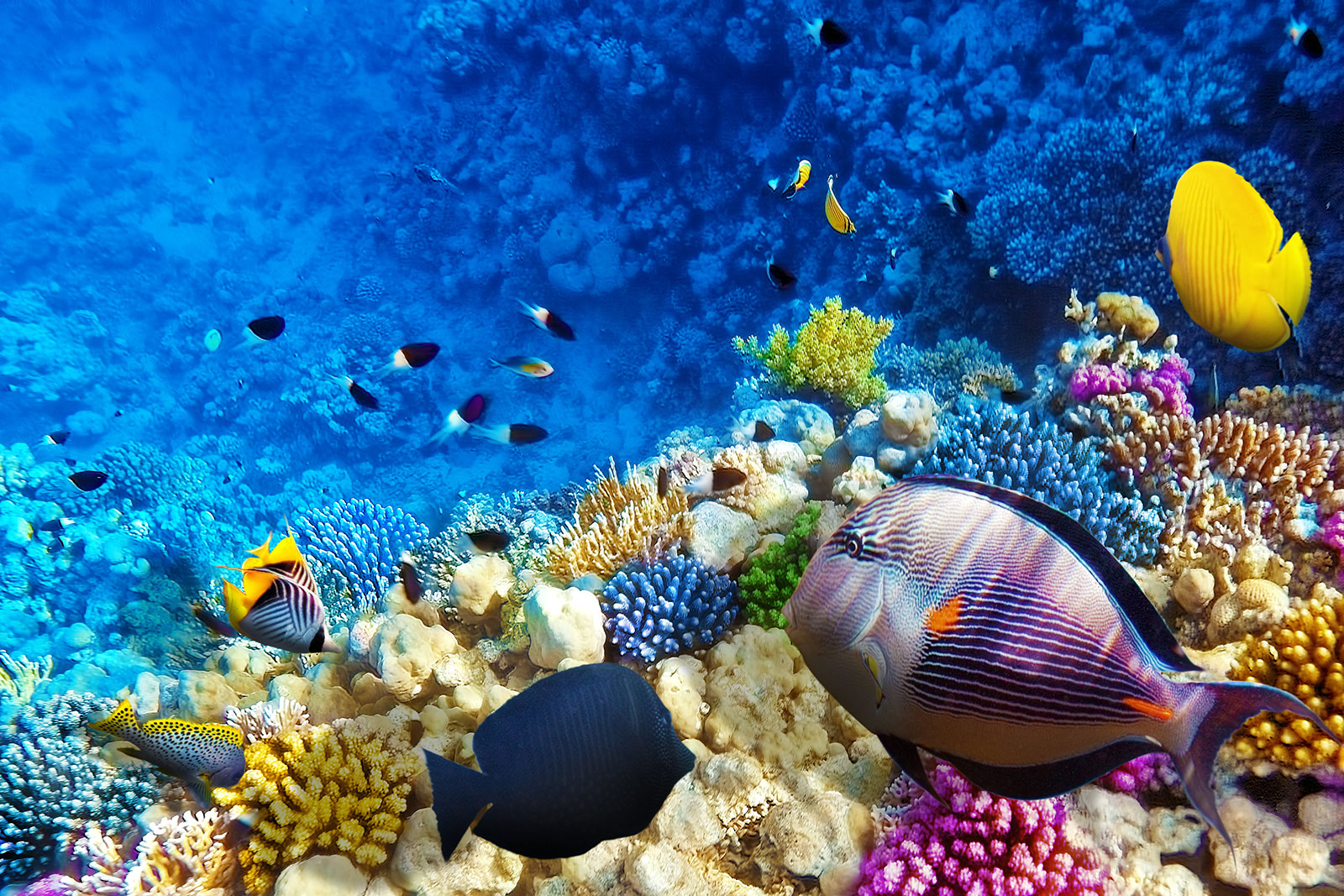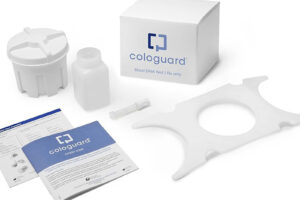While increased sun safety awareness has greatly benefited the human population, it has harmful effects on marine life. Most pressing is the issue of coral bleaching, which causes coral reefs to turn white and release algae from its tissues. In 2018, in response to this threat, the state of Hawaii banned the sale of sunscreen products containing the ingredients oxybenzone and octinoxate.
The bill would go into effect on Jan. 1, 2021. “The purpose of this act is to preserve marine ecosystems, including coral reefs, by prohibiting the sale in Hawaii of ultraviolet sun protection factor sunscreen personal care products containing oxybenzone and octinoxate,” the new bill states. In the case of the bill, personal care products do not just include sunscreen. Lotions, pastes, balms, ointments, creams, solid stick applicators, brush applicators, roll-on applicators, aerosol sprays, non-aerosol spray pumps, and automated mist spray products are all included as part of the ban.
A 2016 joint study spurred the Hawaiian government into action. The study, first published in the journal Environmental Contamination and Toxicology, identified oxybenzone as “an emerging contaminant of concern in marine environments.”
“Oxybenzone is a photo-toxicant; adverse effects are exacerbated in the light,” the study states. “Whether in darkness or light, oxybenzone transformed planulae from a motile state to a deformed, sessile condition. Planulae exhibited an increasing rate of coral bleaching in response to increasing concentrations of oxybenzone.”
Coral bleaching causes the coral to expel algae living in coral’s tissues, which causes the coral to turn white. Major coral bleaching events are not unique to the Hawaiian coastline. In 2005, the U.S. lost half of its coral reefs in one year from a massive bleaching event in the Caribbean. According to the National Oceanic and Atmospheric Administration, “Comparison of satellite data from the previous 20 years confirmed that thermal stress from the 2005 event was greater than the previous 20 years combined.”
Other “significant harmful impacts” include genetic damage to the coral and other marine organisms, increased probability of endocrine disruption, induced deformities in the “embryonic development of fish, sea urchins, coral, and shrimp,” and coral mortality. According to the bill, oxybenzone and octinoxate also “degrade corals’ resiliency and ability to adjust to climate change factors and inhibit recruitment of new corals.” Coral can recover from coral bleaching if the stress-caused bleaching is not severe, but prolonged algae loss and stress can eventually cause coral mortality. Recent studies even suggest chemical sunscreens may be dangerous for human use as well (see “Check the Label,” page 42).
But the 2016 study was not the first to identify the potential harm in sunscreens containing oxybenzone and octinoxate. A 2008 study out of Marche Polytechnic University in Ancona, Italy, found “sunscreens cause the rapid and complete bleaching of hard corals, even at extremely low concentrations […] due to organic ultraviolet filters.” This study also found sunscreens “containing parabens, cinnamates, benzophenones, and camphor derivatives can contribute to hard-coral bleaching if released into natural systems.”
A statewide ban is a significant first step in the protection of marine (and human) life, and it might inspire visitors to be more conscious of their purchases off the island before their arrival.
“The contamination is constantly refreshed and renewed every day by swimmers and beachgoers,” the Hawaiian bill states. The chemicals also enter the water through sewage facilities, as oxybenzone and octinoxate are not removed by water treatment systems in the state. Cesspools, leaking septic systems, and municipal wastewater collection and treatment centers also pose a risk to water contamination. Thus far, oxybenzone and octinoxate have been detected throughout the Hawaiian islands, including at the popular Waimea Bay, Hanauma Bay, and Waikiki beach on Oahu and at the Honolua Bay and Ahihi-Kinau Natural Area Reserve on Maui. Also, according to the 2008 Marche Polytechnic University study, tourists tend to use more sunscreen than what is recommended by the Food and Drug Administration, meaning “the quantity of sunscreen released during a usual bath could be far higher than that estimated in this study.”
“An average dose application of 2 mg/cm² of sunscreen (dose suggested by the U.S. FDA) for a full body surface of 1.0 m² results in an average usage of 20 g per application (Poiger et al., 2004). We consider a conservative measure of two daily applications per tourist traveling on a 5-day average tourist package, and a rough estimate of 78 million tourists per year in areas hosting reefs. Based on this calculation and on an annual production of UV filters, between 16,000 and 25,000 tons of sunscreens are expected to be used in tropical countries. According to our experiment, it is estimated that at least 25% of the amount applied is washed off during swimming and bathing, accounting for a potential release of 4,000-6,000 tons/year,” the study states.
Of course, banning the sale of such products does not stop tourists and other visitors to Hawaii from bringing their own products containing the ingredients into the state. And the bill would not be an outright ban, as people can purchase products with oxybenzone and octinoxate if they have a medically licensed prescription. But a statewide ban is a significant first step in the protection of marine (and human) life, and it might inspire visitors to be more conscious of their purchases off the island before their arrival.
But not everyone is on board with the new ban. In May of 2018, the American Academy of Dermatology Association released a statement in response to the ban. “The American Academy of Dermatology Association is concerned that the public’s risk of developing skin cancer could increase due to new restrictions in Hawaii that impact access to sunscreens with ingredients necessary for broad-spectrum protection, as well as the potential stigma around sunscreen use that could develop as a result of these restrictions,” they wrote in their statement.
Still, that has not stopped Hawaii’s ban nor the spread of similar bans in other environments. In the fall of 2018, the western Pacific nation of Palau banned the sale of “reef-toxic” sunscreens which contain one of 10 prohibited chemicals, including oxybenzone, methylparaben, and ethylparaben. According to The New York Times, tourists with banned sunscreen may get it confiscated upon entry and fined up to $1,000. The ban goes into effect in 2020.
And in February, Key West, Florida, voted to ban the sale of sunscreen containing oxybenzone and octinoxate as a step to protect the state’s barrier reef ecosystem, the third largest in the world. According to The New York Times, the Key West ban will go into effect on Jan. 1, 2021.
“Our coral has been under attack by a number of stressors,” Key West Mayor Teri Johnston said. “We just thought if there was one thing we could do, to take one of the stressors away, it was our responsibility to do so.”
In response to the ban, Hawaii.com released their own recommendations for reef-safe sunscreens, including Thinksport SPF 50 Sunscreen, which has a perfect rating from the Environmental Working Group, Reef Safe Sun® Oxybenzone Free Biodegradable Sunscreen SPF 50, and Banana Boat Simply Protect SPF 50+ Sunscreen spray, among others. All of these products are available on Amazon.com.
Staying sun safe and reef safe does not have to be mutually exclusive. Luckily, consumers have an abundance of choices available to them in easily accessible online and in-store outlets. The best way to stay conscientious is to be proactive. As Nate Masterson of Maple Holistics told us, “This means that getting comfortable with ingredients labels, or sticking to natural sunscreens, is an essential component of adequately protecting yourself and the environment from harmful ingredients.”







